When Amy Aswell accepted an invitation to attend a Sacramento meet-and-greet for A&AA alumni in fall 2012, little did she know it would be a life- and career-changing event. As a result of that gathering, within a year Aswell, MIArch ’07, and business partner Kaljit “KJ” Singh, MArch ‘07, had commissions to redesign three upscale restaurants that garnered glowing reviews in the likes of Remodelista.
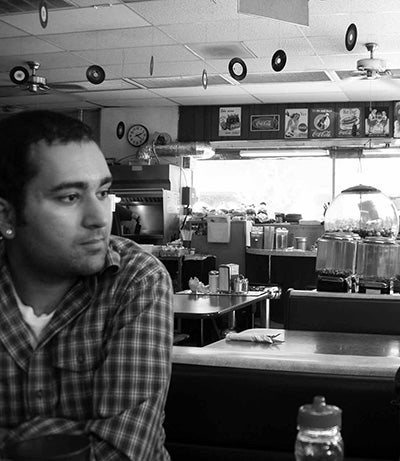
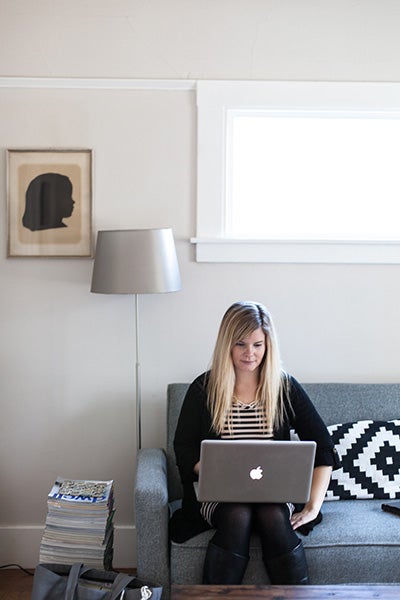
Above: Kaljit Singh (left) and Amy Aswell (right).
The two also saw their nascent interior design practice—Beta Form Industries (BFI), which they founded in early 2012—rocket forward seemingly overnight. Before a year was over, they were also working on a third restaurant design, the Warehouse Artist's Lofts project, and an ongoing collaboration with Vrilakas Architects on additional phases of the Broadway Triangle project in the historic Oak Park neighborhood of Sacramento.
If that weren’t enough, Aswell was named among the “14 for 2014”—or among “the top Sacramentans to watch” in 2014. Aswell “is looking to help transform Sacramento into a world-class city, one interior space at a time,” the report January 2 in the Sacramento News & Review said.
Aswell and Singh started the business partnership after becoming friends at UO and then winding up in Northern California after graduation. Both are LEED AP. Aswell is also a certified interior designer (CID) and teaches full time at the Art Institute of California, Sacramento. Singh teaches part time at the Art Institute and works as project designer in an architecture practice.
Their complementary skills sets means they can do everything from space planning and concept development to project management and everything in between: construction and millwork drawings, furniture and finish selection, color consulting, custom furniture, and lighting design. They’ll tackle anything from residential to hospitality.
That plethora of skills turned out to be the perfect combination for designing restaurant interiors. Aswell and Singh were initially invited to redesign a restaurant in downtown Sacramento for the Paragary Restaurant Group (one of whose founders, Stacy Paragary, is a graduate of the UO Lundquist College of Business marketing program). Along with designing the restaurant’s interior, Aswell’s research led her to suggest a name—Hock Farm—that pays homage to the first large-scale agricultural settlement in Northern California: John Sutter’s Hock Farm, established in 1841 and itself named for the indigenous Nisenan Hock tribe.

Above: Along with designing Hock Farm’s interior with business partner Kaljit Singh, Amy Aswell’s research led her to suggest the name, which pays homage to the first large-scale agricultural settlement in Northern California. Photograph by Kat Alves Photography.
What’s even more impressive is that the redesign was done in a compressed timeframe: three weeks. “The turnaround might set a restaurant-launch record,” writer Kate Washington said in Sactown Magazine.
That was in April 2013. The Paragary group was so pleased with Hock Farm that they asked BFI to redesign their next new restaurant, Café Bernado + Berkley Bar, which opened October 4. One week later, Paragary was back on the phone commissioning BFI for a third restaurant redesign— this time for their oldest and most high-end restaurant, in Midtown Sacramento. “It will be another completely new and different design since it is the only one of its kind,” Aswell says.
“Each restaurant has its own identity based on location, clientele, budget and type of food being served,” Singh adds. He has been able to successfully translate his architecture skills into working on interior spaces because “thankfully Oregon taught me think critically so I can approach all these opportunities—[such as] the nuances involved from acoustics, ambient lighting, needs of service staff etcetera—with more confidence.”
Besides a good measure of determination, both Singh and Aswell also give credit to their education at UO.
“My time at Oregon really taught me to embrace unique challenges and find great solutions,” Singh says. “The school really emphasized a collaborative approach to design and the process was certainly implemented in our designs, elevating them to a higher level.”
Aswell agrees. “I wouldn't be where I am today without my master's degree from UO,” she says. “The interior architecture program really challenged me and pushed me out of my comfort zone in a way I had never experienced before in any other area of my life and it gave me the confidence to strive for lofty career goals,” she says. “The program opened my eyes to design career paths and to a world in which I could make meaningful contributions and improve the spaces and places in which I call home.”
While in school, she says, along with a design career she “fantasized about teaching university classes one day and working on collaborative/dynamic projects with like-minded creatives. But I assumed teaching would come much later in my life,” she says. “The Great Recession actually accelerated my career and helped push open doors that probably would have taken years longer to open had the economy been healthy in those few years post-graduation. It also forced me to look honestly at myself and critically at my training and career options, then take a big leap in the direction of teaching, again probably much sooner than would have occurred with a more robust economy.”
The same can be said for starting a design practice, she says.
“It's typical for designers to work for a firm for years before striking out on their own, and I think this is a more prudent option for most, but opportunity knocked and Kaljit and I felt obligated, and eager, to answer,” she notes. “We were admittedly scared to take the leap but decided to face our fears and go for it. Again, I really credit my experience at UO for giving me the confidence to take that professional risk.”
The risks have paid off. “Working for the Paragary's has been a designer's dream,” Aswell says, “because not only are they great restaurateurs and business people in general, but they were extremely receptive to new design ideas.”
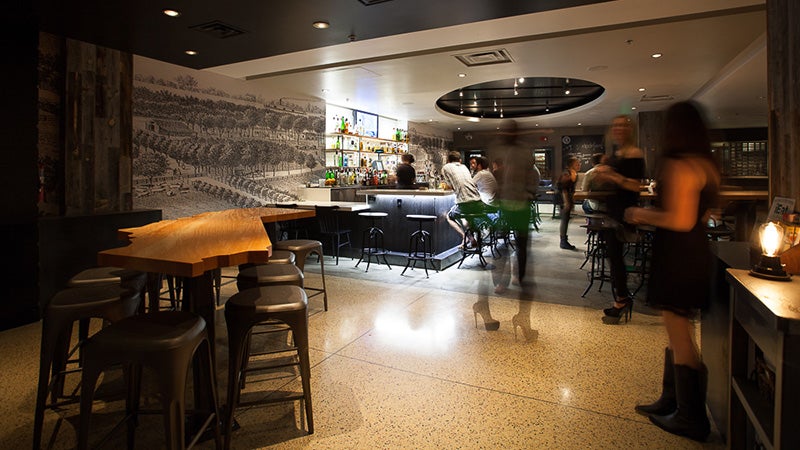
Above: “The turnaround [of the Hock Farm redesign] might set a restaurant-launch record,” writer Kate Washington said in Sactown Magazine. Photograph by Kat Alves Photography.
Working for the same company but on three completely different sites has its pluses, Singh says. “The big benefit of a repeat client is that you really develop a great dialogue and trust with them, which only not only helps the design but streamlines the process.”
A key challenge for both was balancing their simultaneous job commitments. “While we were designing Hock Farm, we also landed a job redesigning a boutique hotel. Things were a bit hairy there for a while from a time-management standpoint, but it was worth it,” Aswell says. “Since Hock Farm opened and we were mentioned on Remodelista, I have since been approached by other architecture firms wishing to collaborate.”
Given that Aswell graduated near the nadir of the Great Recession, she’s the first to say she’s stunned by where her career has already led her, especially regarding teaching.
“I think it's astonishing that I've pulled off teaching twenty-seven different classes,” she says. “I'm also really proud that I've designed five restaurants/bars before turning the age of 35. In school I remember people saying that in the 'real world' not many people actually have the opportunity to work on hospitality projects, and even less on restaurants. So I don't take any of this for granted.”
Their success has been hard won, both say. “While I've experienced some great highs that come with designing five restaurants and conquering teaching numerous college design courses, I've also experience some extremely tough times professionally,” Aswell acknowledges. “I remember feeling incredibly discouraged at more than one juncture and seriously considering a completely new career path altogether just to stay afloat financially. But ultimately having patience and steadfastness has served me well.”
Singh concurs. “The juggling can be quite challenging at times but being in such a collaborative environment always helps. Plus being able to love what you do is priceless and makes it not feel like work.”
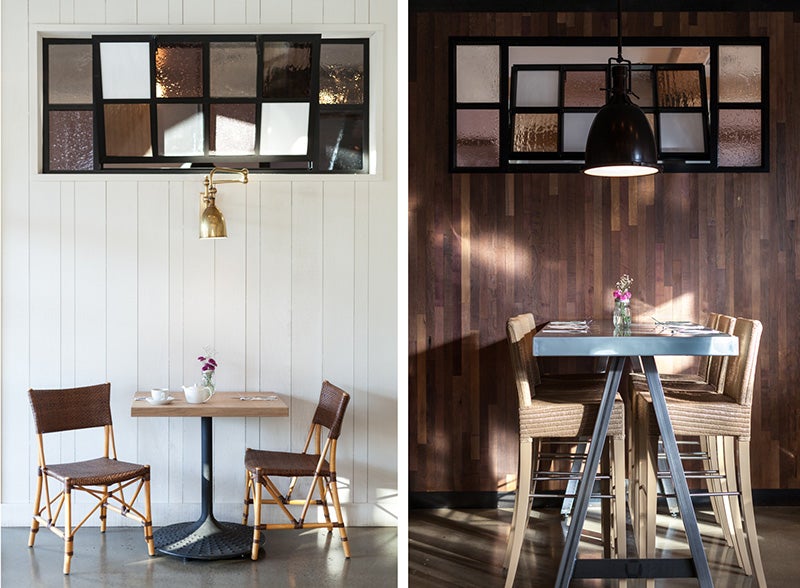
Above: BFI’s redesign of Café Bernado + Berkley Bar. Photographs by Kat Alves Photography.
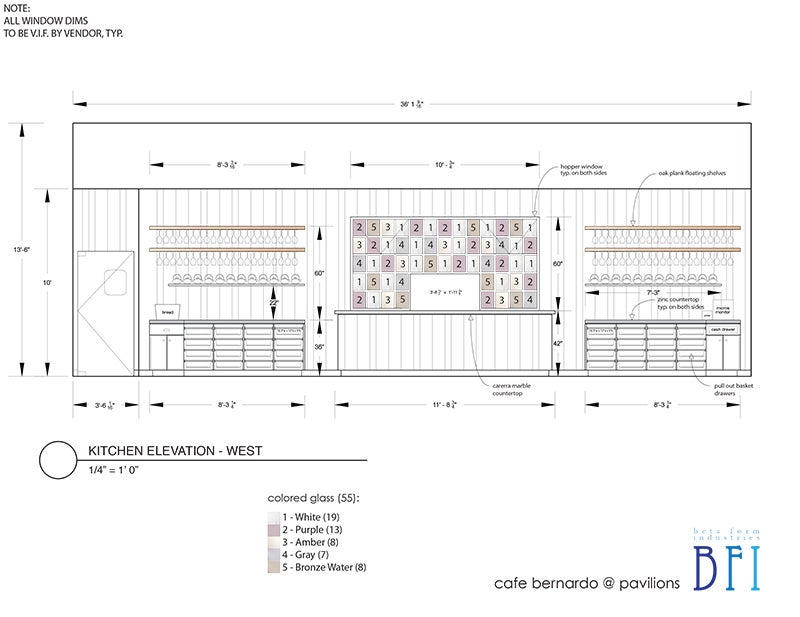
Above: The kitchen elevation for Cafe Bernardo by Beta Form Industries. Image courtesy Beta Form Industries.
